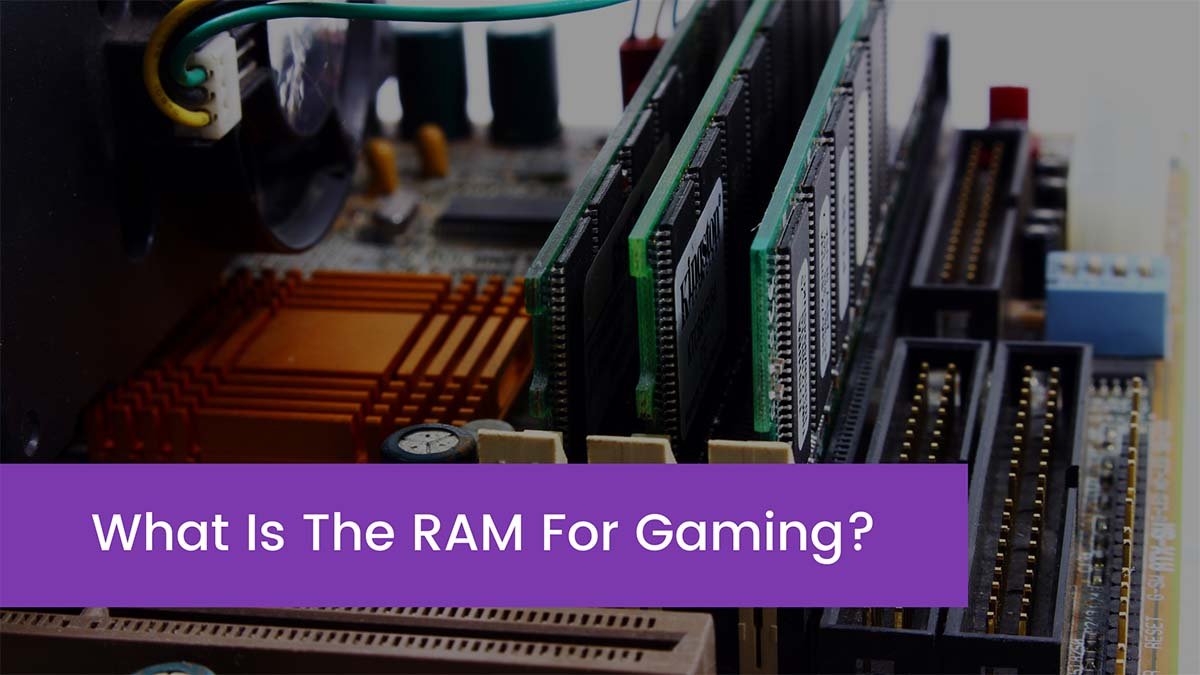Are you interested in learning about how RAM affects your gaming PC and what sort of RAM you should buy? For gamers, here’s an explanation about RAM.
There are various components to consider while designing or updating a gaming PC. Each has a different impact on your computer’s speed, and ignoring any of them could result in a bottleneck.
Let’s look at RAM today. We’ll look at how RAM affects gaming, what RAM specs to look for when shopping, and what you shouldn’t be bothered about.
What Does RAM Have to Do With Gaming?
RAM is the space where needed variables and content are stored, therefore while it has many uses in areas like multitasking, it’s also important in gaming. Because the game is loaded into the RAM when you start a game on your gaming PC, it becomes an active participant.
Because RAM is speedier and designed to store temporary items, it is used instead of the hard drive directly. Larger, quicker RAM is preferable because it enhances the gaming experience and reduces loading times. Not only can you store more temporary data, but the data can also be retrieved and written more quickly.
How Does RAM Affect Gaming Performance?
RAM is vital because it allows your system to access data faster than it can from your main storage disc. You have all of the game’s data saved on your hard drive or solid-state drive, but it’s inefficient to pull it from there all of the time. As a result, in order to load the game quickly, your computer moves the game data it needs to RAM.
If you don’t have enough RAM, your computer won’t be able to store all of the game data it needs to operate smoothly, resulting in choppy frame rates and poor performance. A severe deficit of RAM may result in the game not operating at all.
It’s worth noting that dedicated video cards have their own RAM, which is referred to as vRAM. This is distinct from system RAM in that it is solely dedicated to transferring graphics to your monitor. As a result, if you want to play games at high resolutions like 4K, you’ll need a lot of VRAM. Even if you have 32GB of system RAM, your video card’s performance will suffer substantially if it only has 2GB of video RAM.
How Much RAM Do I Need for Gaming?
As of this writing, the industry standard for mainstream PC gaming is 8GB of RAM. In casual tests, there was minimal difference in performance between 8GB and 16GB of RAM.
While many older games can get by with only 4GB of RAM, there’s no reason to construct a new PC with this little RAM. As games become more complicated and require more RAM, 4GB will no longer be enough.
If you want to future-proof your system or use it for applications like video editing or heavy multitasking, 16GB is a decent upgrade to make. While you may not notice an immediate benefit in games, your foresight will pay off in the long run.
What Ram Speed Do I Require?
Find the ideal combination of capacity and speed. 32GB of sluggish RAM is perhaps not ideal, but neither is 4GB of quick RAM.
DDR4 RAM speeds start at roughly 1600MHz, however by today’s standards, these are considered slow. At standard specifications, the Intel® CoreTM i9-10900 processor, for example, may run at 2933MHz.
When gaming, there are advantages to running RAM at high speeds. Although faster RAM can improve gaming performance and frame rates, it will not have the same effect as upgrading the processor or graphics card.
Performance increases vary by game: some find a significant jump, while others see no change. To assess if the improvement is worthwhile, look at benchmarks for average frames per second.
Faster RAM can improve frame times, or the consistency of the frame rate, in addition to the frame rate. In the benchmarks, this will be represented as the 1% and 0.1 percent low values (averages of the slowest 1% and 0.1 percent of frames recorded).
Faster RAM can increase other aspects of a system’s performance, such as boot times, in addition to frame rates.
What Is Dual-Channel RAM?
Dual-channel memory is found in many current systems. The CPU’s memory controller can exchange data with RAM across two channels in dual-channel (or interleaved) mode, reading, and writing to two sticks of memory at the same time. This expands the bandwidth available.
On most motherboards with only two DIMM slots, the dual-channel mode will be enabled automatically. However, when utilizing two sticks in a four-slot motherboard, the memory must be inserted symmetrically in order to use the same channel. Color-coded slots are common, but they can be staggered or side-by-side. The motherboard documentation provides more extensive instructions.
Ensure that each memory stick has the same speed, capacity, and timings for optimal performance. If at all feasible, avoid mixing and matching different module specs.
Final Words
RAM is a form of short-term storage device used to temporarily store gaming data. Today, 8GB is the standard for gaming, but 16GB is a fantastic long-term investment. Until DDR5 is available, use DDR4 RAM (unless you have a motherboard with DDR3 RAM slots). The faster the RAM clock speed, the better, however, this has only a minor impact in practice. Newer DDR generations have higher cycles. Mixed RAM sticks will have the slowest speed. When selecting how much RAM to buy, keep in mind the number of slots on your motherboard.




![Read more about the article [ 2023 ] How To Make A Glass In Minecraft?](https://wuschools.com/wp-content/uploads/2022/05/how-to-Make-a-Glass-in-Minecraft-300x169.jpg)